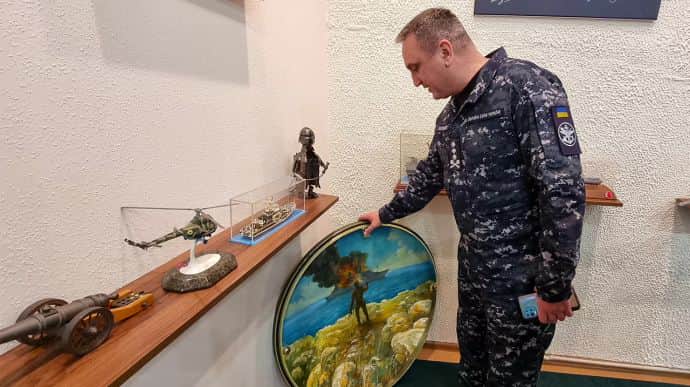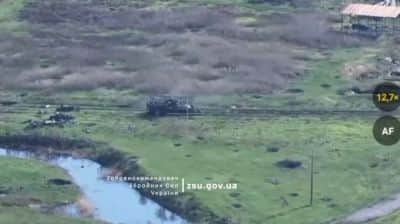Ukraine's Navy Commander explains how ships were saved at beginning of invasion and Russians' landing was avoided

No Ukrainian vessels, apart from the Hetman Sahaidachnyi frigate, which was scuttled, were damaged in the early days of the full-scale war because they were redeployed to various points.
Source: Vice Admiral Oleksii Neizhpapa, Commander of the Ukrainian Navy, in an interview with Ukrainska Pravda (the interview will soon be translated into English)
Details: Neizhpapa said that before Russia's full-scale invasion, he understood that the war would be taking place not only in Ukraine’s east, and as a military man, he had been preparing "for the worst-case scenarios".
"The enemy had created a full-fledged flotilla of amphibious forces, gathering landing ships from all navies, and had acquired the capability to land a full-fledged marine brigade in several areas simultaneously. So, of course, I understood that the war would not be limited to Donbas. We understood this perfectly well and were preparing for it," he said.
Quote: "A certain flotilla was created in the Navy by order of the Commander-in-Chief of the Armed Forces. This flotilla was dispersed – some ships were at sea, and some were at other base points, non-standard, as they say, at civilian berths or other facilities. But most of the ships were at sea.
Therefore, in the first days of the war, no warships were damaged after massive enemy attacks, they were all dispersed. Naval aircraft were also lifted from airfields. We had no significant damage to our naval aircraft at the beginning of the full-scale aggression."
Details: Regarding the loss of the Hetman Sahaidachnyi frigate, which was scuttled so as not to let the Russians capture her, Neizhpapa explained that repair and modernisation works had begun on the Hetman Sahaidachnyi at the time of the full-scale invasion.
Therefore, the frigate could neither be used for defence nor relocated.
Quote: "She had no power, all the diesel generators were to be completely replaced, the turbines were being repaired, and all the weapons were out of order. As a warship that could participate in repelling aggression, she could not operate at all at that time.
Therefore, the ship's commander made a reasonable decision, in my opinion. This is spelled out in the "On Ship's Service" regulation: the enemy must not get the ship. At that time, the enemy was advancing very quickly through Kherson Oblast, had already bypassed Kherson, and was on the outskirts of Mykolaiv."
Details: Neizhpapa said that it was only because Ukrainian soldiers stopped the Russians near Voznesensk in Mykolaiv Oblast that the Russians did not launch an airborne operation in the Black Sea operational zone.
Neizhpapa explained that Russia had the air and sea supremacy necessary to land on the coast, but that a naval operation is usually conducted in the direction of the enemy's main attack and under appropriate conditions on land.
Quote: "After the full-scale invasion, the enemy advanced to Mykolaiv, then went northwest, bypassing Mykolaiv towards Voznesensk, to enter the rear of Odesa Oblast. If our 80th Air Assault Brigade had not stopped the enemy near Voznesensk, the conditions would have been created for the Russians to launch an operation in the Black Sea operational zone.
But the Navy did not stand still. We were building minefields in the areas accessible to [Russian] landing operations. From the very first days, artillery units of the Marines and other brigades stationed in Odesa Oblast at the time were brought to the area around the firing positions. We intensified radio and radar reconnaissance, both with the use of radar posts and Bayraktar unmanned aerial vehicles to detect enemy landings.
In other words, we were also preparing for such enemy actions. Yes, the landings did not occur, firstly because the conditions on the ground were not created at that time. Secondly, you know the story of the first time we hit the frigate Admiral Essen with Neptune missiles. And then there was the Moskva cruiser. And the enemy realised that it would be very difficult to just come to our shores without sinking. So, of course, it abandoned the amphibious operation."
Support UP or become our patron!





